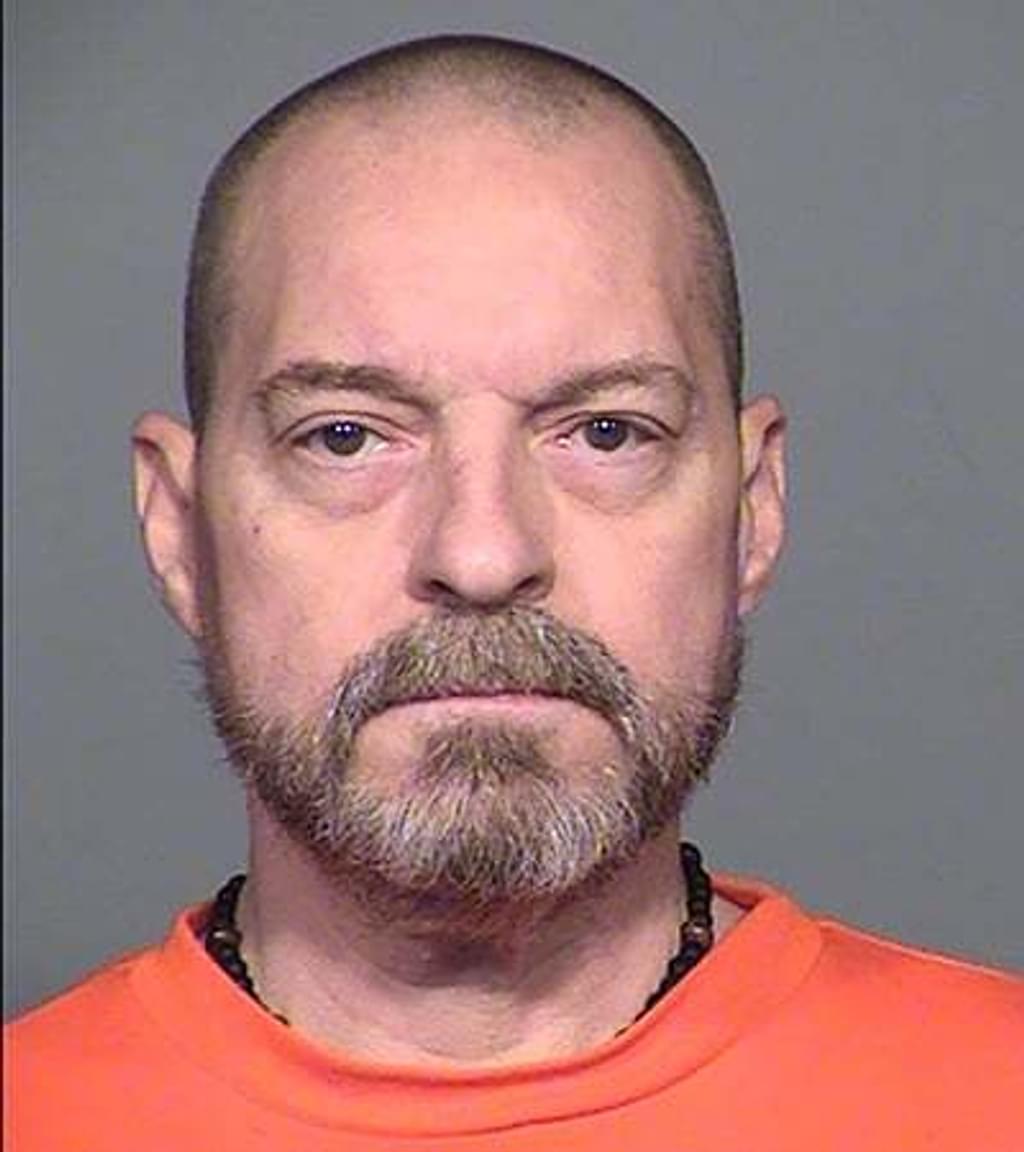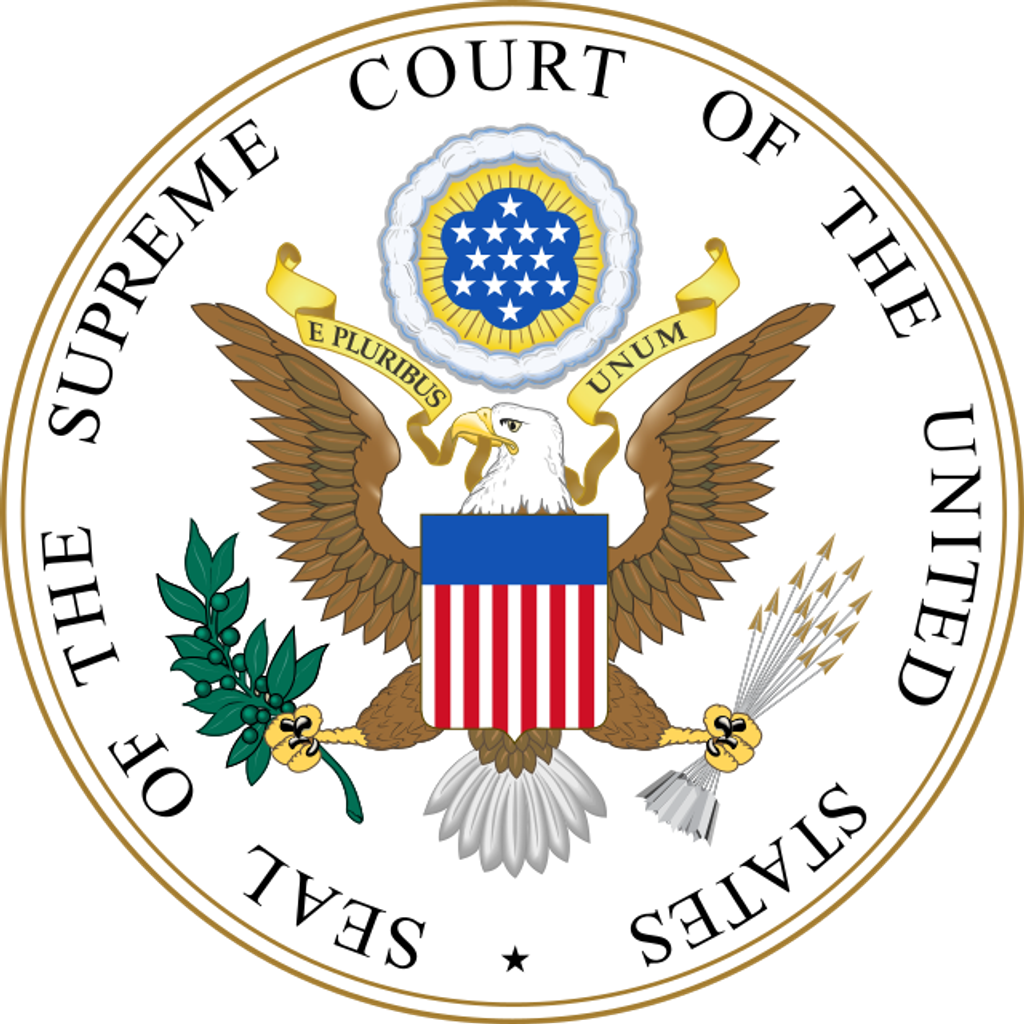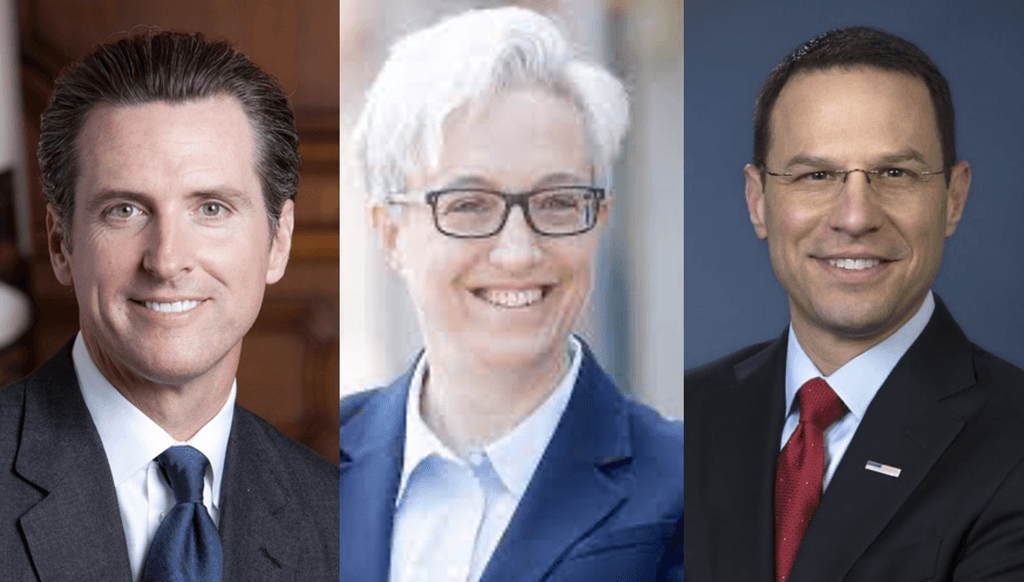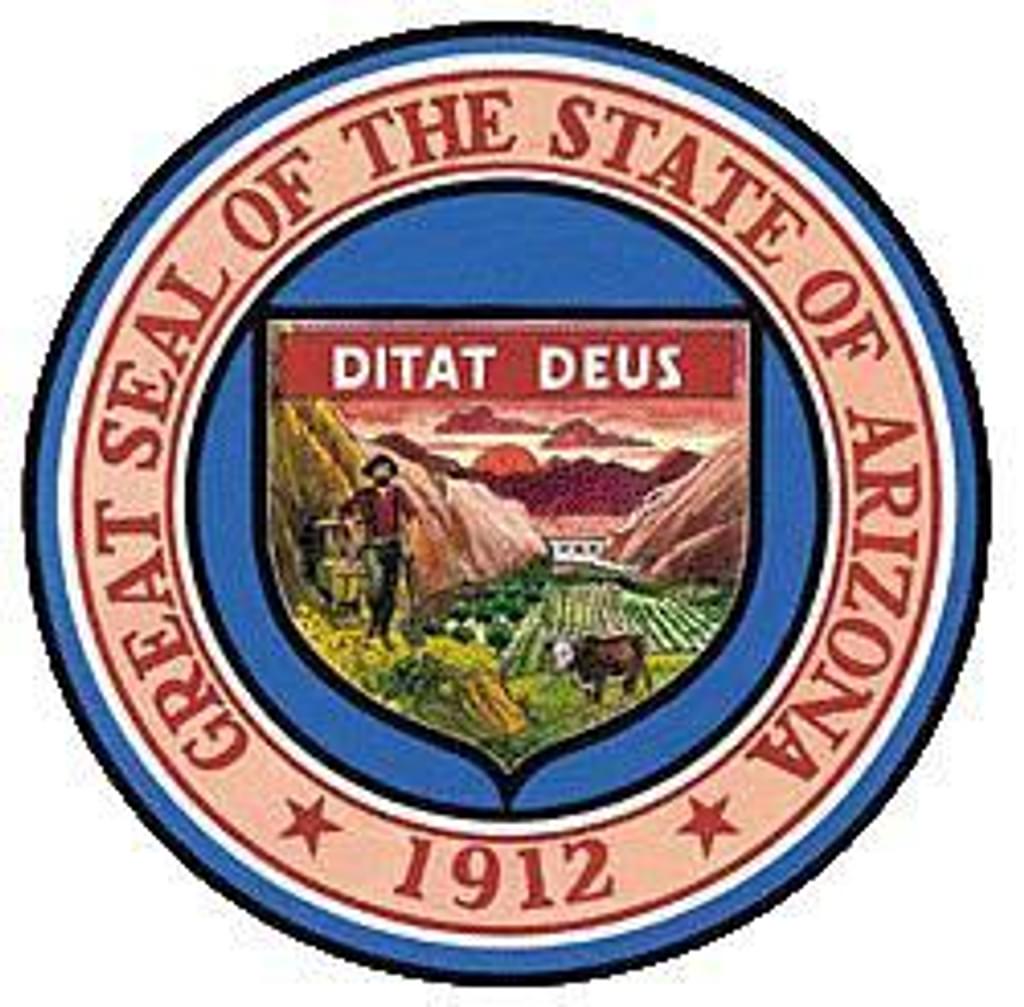
State & Federal
Arizona

History of the Death Penalty
Capital punishment has been a feature of the Arizona criminal justice system since 1865, when Dolores Moore became the first recorded execution in the federal territory that is now the state of Arizona. 108 executions were carried out in Arizona before the national moratorium on executions was imposed by the US Supreme Court in 1972. Executions were generally carried out by method of hanging until 1934, when the first execution by gas chamber was carried out in Arizona. Lethal injection became Arizona’s primary method of execution on November 15th of 1992, however those sentenced to death before that date may still elect lethal gas as their method of execution.
Timeline
1865 – First known execution in Arizona, Dolores Moore hung for murder.
1930 – Eva Dugan is executed and the rope snaps her head off.
1934 – Arizona abandons hanging in favor of the gas chamber for executions.
1972 – The Supreme Court strikes down the death penalty in Furman v. Georgia.
1973 – Arizona passes a law reinstating capital punishment.
1976 – The Supreme Court reinstates the death penalty when it upholds Georgia’s statute in Gregg v. Georgia.
1978 – The Supreme Court’s decision in Lockett v. Ohio invalidates Arizona’s statute. All death row prisoners were subsequently remanded for resentencing.
1979 – The Arizona Legislature revises the state’s capital punishment statute.
1992 – Arizona voters replace the gas chamber with lethal injection, although people sentenced prior to this date could still choose the gas chamber to be executed.
1999 – Arizona gasses Walter LaGrand, a German citizen, to death.
2000 – Arizona Attorney General Janet Napolitano creates the Capital Case Commission to study the death penalty in Arizona.
2001 – The International Court of Justice finds that the U.S. violated the Vienna Convention when it executed LaGrand without informing him of his right to be assisted in his case by the German consulate.
2002 – The U.S. Supreme Court finds the Arizona death penalty sentencing scheme unconstitutional in Ring v. Arizona.
2011 – Amid a national lethal injection drug shortage, the Department of Justice informs Arizona that its supply of sodium thiopental was imported illegally. Arizona rapidly switches to pentobarbital and continues executions.
2014 – Arizona executes Joseph Wood using a two-drug cocktail of midazolam and hydromorphone. It takes Wood two hours to die. A federal judge subsequently issues a stay on executions in Arizona.
2015 – Debra Milke, on death row for murdering her son, is exonerated.
2015 – Arizona tries to import illegal lethal injection drugs from India, but the drugs are confiscated at the Phoenix airport by FDA officials.
2016 - Arizona officials declare that the state does not have the drugs necessary to carry out an execution and is unable to obtain them.
2017 - A federal district court judge in Arizona denies the disclosure of execution drug suppliers to the state after Arizona’s secrecy surrounding the death penalty was challenged by multiple news organizations as violating the First Amendment.
2019 - The U.S. Court of Appeals for the Ninth Circuit rules that the public has a First Amendment right to witness and hear the entire process of execution in First Amendment Coalition of Arizona v. Ryan. The court further prohibited Arizona from turning off the execution chamber’s microphone during an execution.
2021 - Arizona Department of Corrections, Rehabilitation, and Reentry refurbishes the state’s gas chamber and spends more than $2000 procuring cyanide gas ingredients in preparation to kill death row inmates using hydrogen cyanide. The lethal gas would be the same as that deployed at by the Nazi regime during the Holocaust.
2022 - Arizona puts Clarence Dixon to death in its first execution attempt since 2014. ADCRR personnel failed to set an intravenous line in Dixon’s arms for 25 minutes before performing an unauthorized “cutdown” procedure to use a vein in his groin to insert the IV.
2023 - Barry Jones is freed from Arizona’s death row after being incarcerated for 29 years.
Famous Cases
Tison v. Arizona: Perhaps the most infamous death penalty cases in the history of Arizona had their inception in a 1978 prison break. Gary Tison and his cellmate Randy Greenawalt, both serving life sentences for previous murders, escaped from Arizona State Prison with the help of Tison’s three sons and lackadaisical prison visitation rules. After disabling the prison’s phone and alarm system the gang fled toward the California border. After the getaway vehicle used by the group blew a tire, Gary Tison killed the family that stopped to offer assistance, taking their vehicle and fleeing towards Colorado. The group killed another couple for their vehicle in Colorado, fleeing back into Arizona. After running one roadblock set up by police, they ran into a second roadblock that was better prepared. A shootout resulted, killing one of Tison’s sons. The rest tried to escape on foot, and although Greenawalt and two of Tison’s sons were caught quickly, Gary Tison escaped into the desert. His body was discovered 11 days later. The remaining Tisons and Greenawalt were charged with 92 crimes, including several counts of capital murder, even though they had not been the ones to pull the trigger. In 1986 this issue came before the Supreme Court of the United States, with the Tison brothers arguing that Arizona’s felony murder statute was unconstitutional because it allowed for the death penalty for those other than the actual killer. In a 5-4 decision, the Supreme Court rejected their appeal, stating that major participants in a felony who exhibit extreme indifference to human life are eligible for the death penalty. Although Greenawalt was executed in 1997, the Tison brothers had their sentences reduced.
Ring v. Arizona: In this 2002 ruling, the Supreme Court of the United States held that jurors, rather than a judge, must be allowed to determine whether a defendant is eligible for a death sentence. The finding of the Court rested on its previous ruling in Apprendi v. New Jersey: if a particular element of the crime or sentencing factor exposed a defendant to harsher punishment, a jury must find that factor. The Supreme Court found no logical or compelling reason to exempt capital cases from this requirement. After the Supreme Court’s ruling, the Arizona legislature met in an emergency session to mend the death penalty statute to meet the guidelines laid down by the Supreme Court, providing that jurors, not judges, would be responsible for imposing a death sentence.
Notable Exonerations
On April 8, 2002, Ray Krone was released from Arizona prison after DNA evidence exonerated him. He had been convicted and sentenced to death in 1992, based on circumstantial evidence and testimony stating that bite marks on the victim’s body matched Krone’s teeth. His conviction was overturned, but he was retried and sentenced to life in prison. DNA evidence was not presented in Krone’s original trial, and tests for his second trial were inconclusive. In 2001, his defense attorney secured a court order to retest the DNA using the latest technology. Those tests found that the DNA did not belong to Krone, but instead came from another man, Kenneth Phillips, who was also in prison in Arizona.
On March 14, 2003, the Pima County Attorney’s Office dismissed all charges against death row inmate Lemuel Prion, who had been convicted of murdering Diana Vicari in 1999. In August 2002, the Arizona Supreme Court had unanimously overturned his conviction, stating that the trial court committed reversible error by excluding evidence of another suspect. According to the Supreme Court, “There was no physical evidence identifying Prion as her killer,” and the trial court abused its discretion in not allowing the defense to submit evidence that a third party, John Mazure, was the actual killer. Mazure, who was also a suspect in the murder, was known to have a violent temper, saw Vicari the night of her disappearance, concealed information from the police when they questioned him, and “appeared at work the next morning after Vicari’s disappearance so disheveled and disoriented that he was fired.” The Arizona Supreme Court held that the third-party evidence “supports the notion that Mazure had the opportunity and motive to commit this crime.” (Arizona v. Prion, No. CR-99-0378-AP (2002)) Prion’s conviction was based largely on the testimony of Troy Olson, who identified Prion as the man who was with Vicari on the night of her murder. However, when police first showed Olson photographs of Prion, Olson could not identify Prion. Seventeen months later, after seeing a newspaper picture of Prion labeling him as the prime suspect in the Vicari murder, Olson believed he could identify Prion. Prosecutors admitted that Prion would most likely have been acquitted if prosecuted under the standards set by the August 2002 ruling. Prion remained incarcerated in Utah for an unrelated crime.
Read DPIC’s descriptions of Arizona’s seven other exonerations:
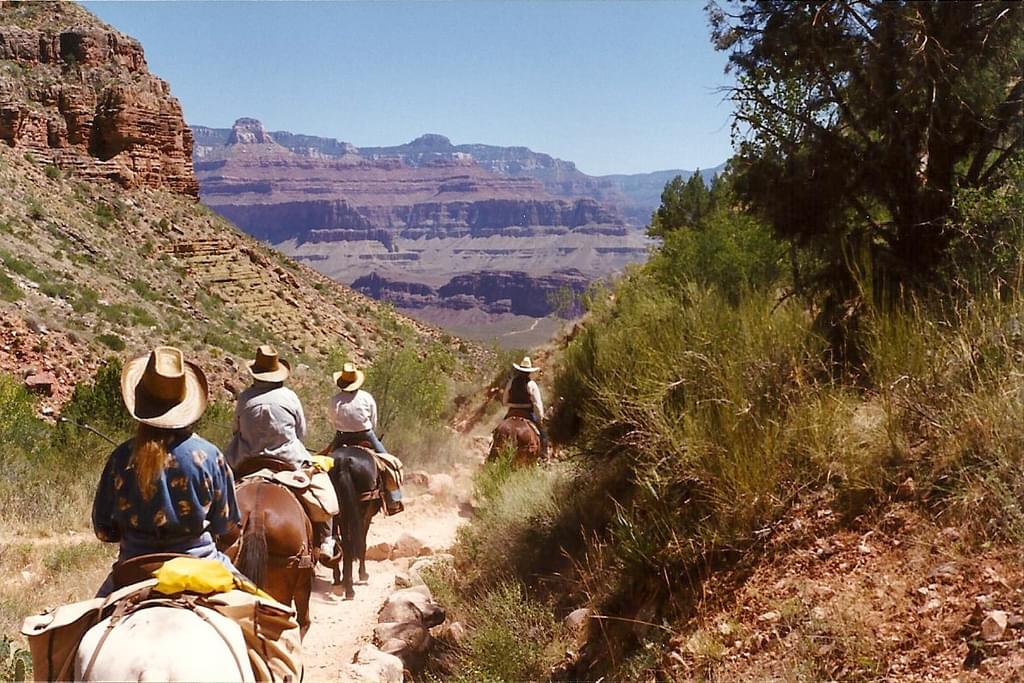
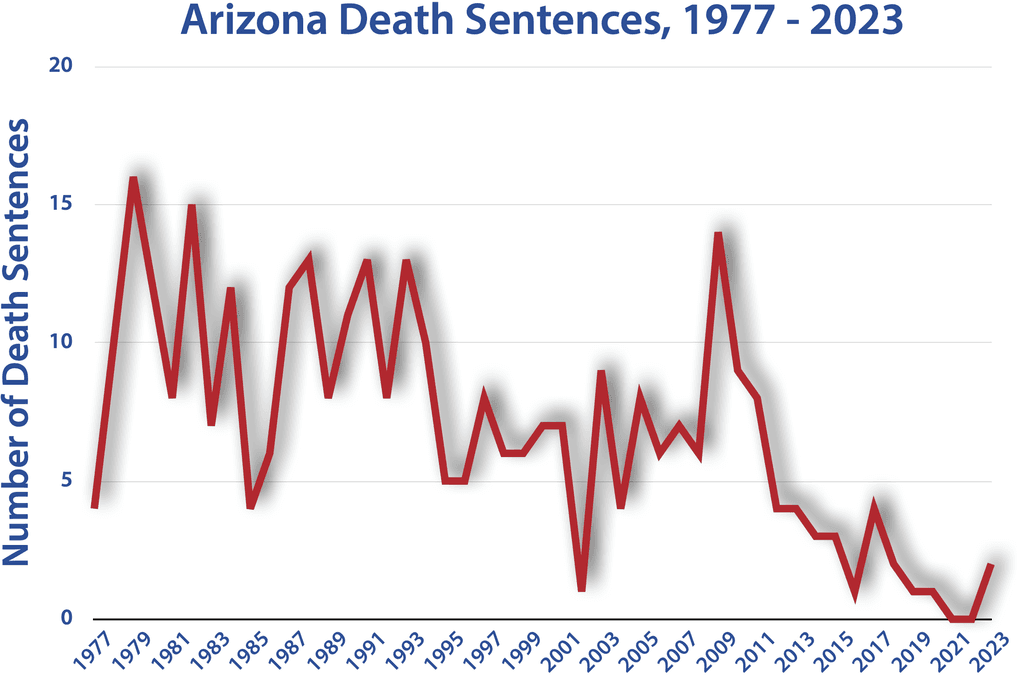
Arizona Execution Totals Since 1976
News & Developments
News
Apr 24, 2024
Supreme Court Roundup: Justices Hear Oral Arguments on Ineffective Assistance of Counsel, Cruel and Unusual Punishment; Defend Positions on Stays
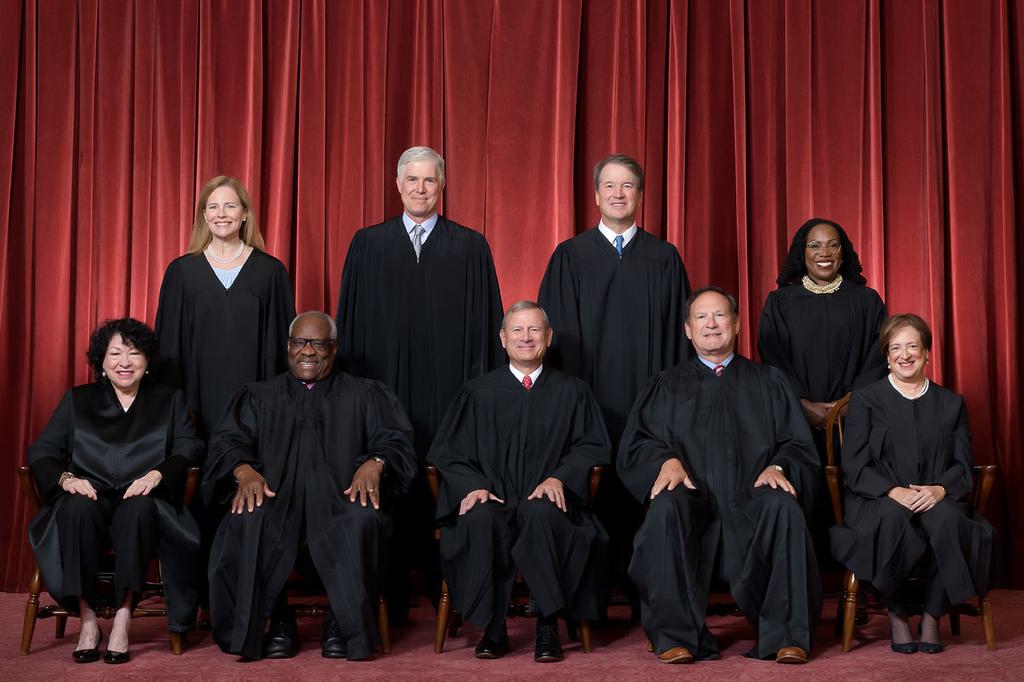
On April 17, the Supreme Court heard oral arguments in Thornell v. Jones, a case implicating the test for ineffective assistance of counsel — and the first and only oral argument in a death penalty case scheduled this term. Arizona appealed the Ninth Circuit’s decision vacating the death sentence of Danny Lee Jones, which found that Mr. Jones was prejudiced by his attorney’s failure to present key mitigating evidence as to Mr. Jones’ brain damage, childhood physical and sexual abuse, and psychiatric problems. The case marks the second time the Supreme Court…
Read MoreDec 15, 2023
Supreme Court Agrees to Second Review of Arizona Death Penalty Case on Arizona’s Request
On Wednesday, December 13, the U.S. Supreme Court granted certiorari in Thornell v. Jones, its first death penalty case to be heard at oral argument in the 2023 term. Unlike most death penalty cases that seek Supreme Court review, the petitioner here is the state of Arizona, which asks the Court to reverse the Ninth Circuit’s grant of relief for death-sentenced prisoner Danny Lee Jones (pictured). The Ninth Circuit held that Mr. Jones demonstrated ineffective assistance of counsel at his sentencing phase under Strickland v. Washington (1984). So far this…
Read MoreJun 16, 2023
Barry Jones Freed from Arizona’s Death Row after 29 Years
On June 15, 2023, Arizona death-sentenced prisoner Barry Jones was freed after serving 29 years for a crime that the Arizona Attorney General agreed he did not commit. Mr. Jones was sentenced to death in 1995 after being convicted of murdering his girlfriend’s four-year-old daughter in 1994. Medical evidence that was readily available at the time of trial showed that the child did not sustain her fatal internal injuries during the time while she was in Mr. Jones’s care. But this evidence was not discovered by either his trial attorney or…
Read MoreMay 12, 2023
INNOCENCE: Another Death-Row Exoneration Added to DPIC’s Innocence List
Occasionally, DPIC discovers an older case involving an exoneration from death row and adds that case to the DPIC Innocence List. Joe Cota Morales was convicted and sentenced to death in Arizona in 1976 and was exonerated in 1981. He has now been added to the Innocence List, bringing the total number of death-row exonerations to 192.
Read MoreMay 03, 2023
RESOURCES: Newspaper Series Explores Arizona’s Recent Death Penalty History
In a detailed five-part series titled “Poorly executed: How Arizona has failed at carrying out the death penalty,” the Arizona Mirror explores the last 16 years of Arizona’s use of capital punishment. The series focuses on controversies surrounding the executions themselves, including changes to the drug protocol, the use of inexperienced or unqualified personnel, and the state secrecy surrounding the process. It also looks into other major issues in capital punishment, such as innocence, costs, and racial bias.
Read MoreMar 06, 2023
Arizona Chooses Former Federal Judge to Undertake Independent Review of the Death Penalty
On February 24, 2023, Governor Katie Hobbs [pictured] of Arizona announced the appointment of retired Judge David Duncan, a former federal magistrate, to lead Arizona’s Death Penalty Independent Review Committee, with all executions to be put on hold in the interim.
Read MoreFeb 23, 2023
U.S. Supreme Court Reverses Arizona Ruling That Barred Death Row Appeal
In a 5 – 4 decision in Cruz v. Arizona on February 22, 2023, the U.S. Supreme Court held that John Cruz should have been able to inform his sentencing jury that if he were spared a death sentence, he never would have been eligible for parole. The Court said that its holding was in direct line with its previous decisions in Simmons v. South Carolina and Lynch v. Arizona, which established this right and its specific applicability to Arizona. This ruling not only allows Cruz to renew his appeal for a new penalty trial, but it could affect…
Read MoreJan 23, 2023
Botched Executions Prompt New Arizona Governor and Attorney General to Halt Executions Pending Independent Review of State’s Execution Process
Executions in Arizona are effectively on hold after Governor Katie Hobbs (pictured) ordered a review of the state’s execution process following three botched executions in 2022 and Attorney General Kris Mayes filed a motion to withdraw the state’s only pending request for a death warrant. The two state officials, elected in the November midterm elections against opponents who falsely claimed the 2020 Presidential election had been stolen, said their actions will help ensure transparency and accountability in the state’s use of the death penalty.
Read MoreJan 17, 2023
Tennessee Gov. Says No Death Warrants Until Execution Protocol Problems Fixed
Tennessee will not resume executions until it fixes systemic problems with the administration of its execution protocol, Governor Bill Lee has announced. “It’s a very important issue that has to be done correctly,” Lee told reporters on January 5, 2023. “And we will take the time to fix the protocol and to make certain that we don’t move forward until everything’s in place.”
Read MoreDec 07, 2022
As Lethal Injection Turns Forty, States Botch a Record Number of Executions
On December 7, 1982, Texas strapped Charles Brooks to a gurney, inserted an intravenous line into his arm, and injected a lethal dose of sodium thiopental into his veins, launching the lethal-injection era of American executions. In the precisely forty years since, U.S. states and the federal government have put 1377 prisoners to death by some version of the method. Touted as swift and painless and a more humane way to die — just as execution proponents had said nearly a century before about the electric chair — the method…
Read MoreDec 06, 2022
Midterm Elections: Moratorium Supporters, Reform Prosecutors Post Gains Despite Massive Campaign Efforts to Tie Reformers to Surge in Violent Crime
In a year that featured massive campaign advertising attempting to portray legal reformers as responsible for increases in violent crime, candidates committed to criminal legal reform or who promised to continue statewide moratoria on executions posted key election wins in the 2022 midterm elections. Defying a pre-election narrative forecasting a backlash against progressive prosecutors and conventional wisdom that fear of crime drives political outcomes, reform prosecutors were re-elected to office and gained new footholds in counties across the country.
Read More

